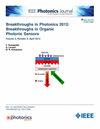Bayesian Optimized ANFIS Network Using Grid Partition and Feature Spectrum for Urban Light Pollution Assessment
IF 2.4
4区 工程技术
Q3 ENGINEERING, ELECTRICAL & ELECTRONIC
引用次数: 0
Abstract
Precise luminance evaluation of light pollution requires expensive and time-consuming measurement devices such as hyperspectral imaging cameras and imaging luminance-meters, which are also inconvenient to carry. To alleviate this challenge, we selected a low-cost smartphone camera sensor as an alternative tool and investigated the various factors that could influence the accuracy of the measurements by controlling the function of the sensor and assessing its performance, including light illumination conditions and device parameters. Building on this, we have developed an Adaptive Neuro-fuzzy Inference System (ANFIS) structure utilizing global Bayesian optimization and grid partitioning (GP), which integrates the advantages of fuzzy logic in handling data uncertainty with the self-learning capabilities of artificial neural networks. This method can capture the relationships between different parameter combinations while avoiding overfitting, effectively handling unseen data with rapid convergence. The experimental results demonstrate that this method reduces the error by at least 30% compared to conventional methods when tested on a dataset with previously unseen shot parameters. Using a smartphone as a measurement device offers superior portability and broader prospects compared to cameras. Leveraging the powerful processing capabilities of smartphone platforms, we can implement more advanced visualization and computational functions in the future.利用网格划分和特征频谱进行城市光污染评估的贝叶斯优化 ANFIS 网络
光污染的精确亮度评估需要昂贵且耗时的测量设备,如高光谱成像相机和成像亮度计,且不方便携带。为了缓解这一挑战,我们选择了一种低成本的智能手机相机传感器作为替代工具,并通过控制传感器的功能和评估其性能(包括光照条件和设备参数)来研究可能影响测量精度的各种因素。在此基础上,我们开发了一种利用全局贝叶斯优化和网格划分(GP)的自适应神经模糊推理系统(ANFIS)结构,该结构将模糊逻辑在处理数据不确定性方面的优势与人工神经网络的自学习能力相结合。该方法既能捕捉不同参数组合之间的关系,又能避免过拟合,有效处理未见数据,收敛速度快。实验结果表明,与传统方法相比,该方法在具有先前未见过的射击参数的数据集上进行测试时,误差至少降低了30%。与相机相比,使用智能手机作为测量设备具有优越的便携性和更广阔的前景。利用智能手机平台强大的处理能力,我们可以在未来实现更高级的可视化和计算功能。
本文章由计算机程序翻译,如有差异,请以英文原文为准。
求助全文
约1分钟内获得全文
求助全文
来源期刊

IEEE Photonics Journal
ENGINEERING, ELECTRICAL & ELECTRONIC-OPTICS
CiteScore
4.50
自引率
8.30%
发文量
489
审稿时长
1.4 months
期刊介绍:
Breakthroughs in the generation of light and in its control and utilization have given rise to the field of Photonics, a rapidly expanding area of science and technology with major technological and economic impact. Photonics integrates quantum electronics and optics to accelerate progress in the generation of novel photon sources and in their utilization in emerging applications at the micro and nano scales spanning from the far-infrared/THz to the x-ray region of the electromagnetic spectrum. IEEE Photonics Journal is an online-only journal dedicated to the rapid disclosure of top-quality peer-reviewed research at the forefront of all areas of photonics. Contributions addressing issues ranging from fundamental understanding to emerging technologies and applications are within the scope of the Journal. The Journal includes topics in: Photon sources from far infrared to X-rays, Photonics materials and engineered photonic structures, Integrated optics and optoelectronic, Ultrafast, attosecond, high field and short wavelength photonics, Biophotonics, including DNA photonics, Nanophotonics, Magnetophotonics, Fundamentals of light propagation and interaction; nonlinear effects, Optical data storage, Fiber optics and optical communications devices, systems, and technologies, Micro Opto Electro Mechanical Systems (MOEMS), Microwave photonics, Optical Sensors.
 求助内容:
求助内容: 应助结果提醒方式:
应助结果提醒方式:


